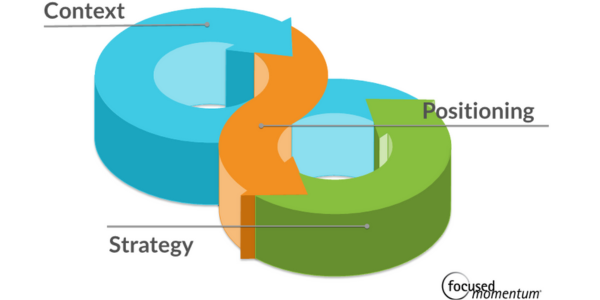Born a Strategist
“I don’t know how you do what you do.” Years ago, I was lunching with a long-standing client to discuss a new leadership challenge he was taking on....
1 min read
.webp) Cecilia Lynch
Oct 8, 2018 11:37:54 PM
Cecilia Lynch
Oct 8, 2018 11:37:54 PM

The relationship between strategy and positioning is both the result of strategic planning in which you first set the context within which you operate and then define the ultimate position you want to achieve within this context. A strategy is your plan for how to move from where you are today, your current positioning, and where you ultimately want to be, your ideal strategic positioning.
Your Strategic Plan must facilitate strategic thinking that delivers all three:
Too often, we see documents labeled “Strategic Plan” that are merely aggregated goals (the bottoms-up approach) or current plans wrapped in a new language but void of any new thinking. These documents fail to communicate new strategic thinking because they have not followed any strategic planning practices.
To define a truly strategic position, you must have spent time defining and compiling the market context from which you define a position. This requires conducting research on your market or at least gathering market intelligence from folks who have spent time in the market (sales and marketing). Once assembled, the strategic planning team must make sense of the data and insights with strategic thinking and generate a strategic context from which the strategic direction is based.
Creating this context naturally leads to greater clarity in setting your ideal strategic positioning. With this context, you can see where you and others in your market operate today and what “space” you ideally want to occupy. This is strategic positioning.
These strategic thinking activities lay the foundation for a strategy that you can authentically call a strategic plan.
Learn more about how to engage in strategic planning.

“I don’t know how you do what you do.” Years ago, I was lunching with a long-standing client to discuss a new leadership challenge he was taking on....

The aim of a strategic thinking process is to add value to your business so that you maximize your resources and create competitive advantage now and...

Strategic thinking combines observation, creativity, and pragmatism to focuses on ‘where your organization should be headed and why.' It is the...